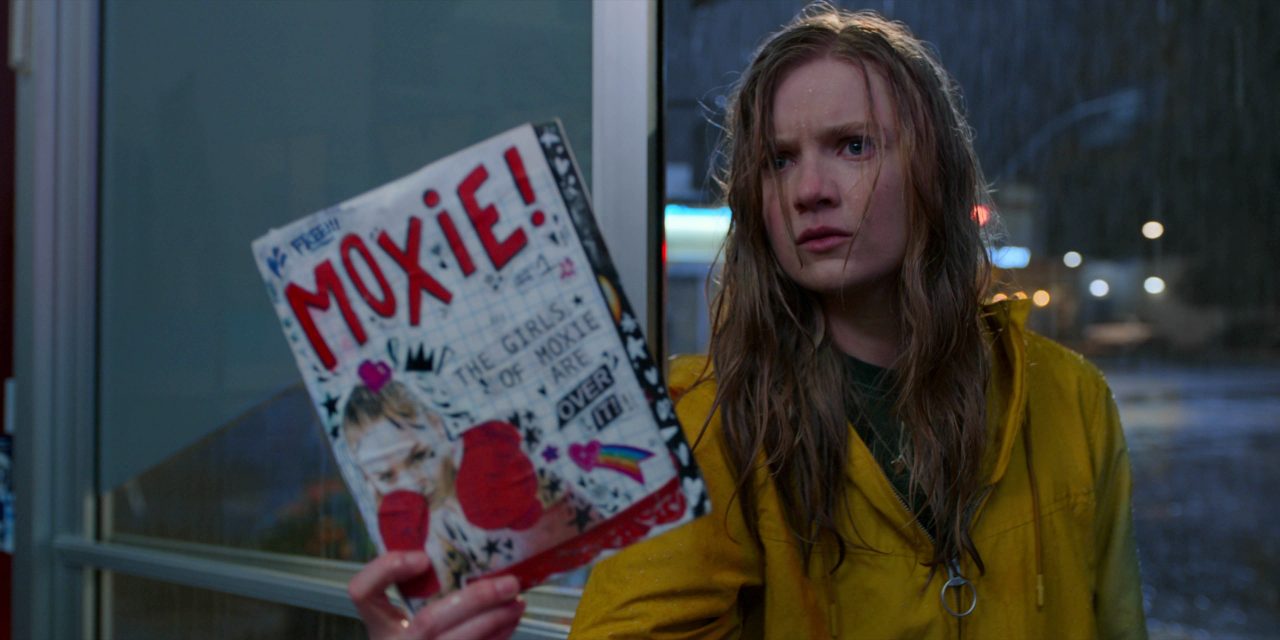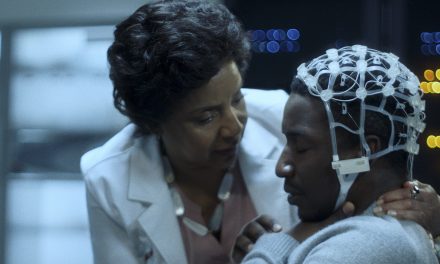“What do 16-year-olds care about?” The answer to this question, which frames director Amy Poehler’s “Moxie,” is destroying the patriarchy and rejecting sexist norms. “Moxie,” which released March 3 on Netflix, invites us to look at feminism as a necessary part of the high school experience, especially for teenage girls navigating discrimination in male-dominated societies. However, as much as the film has the power to imbue its audience with the desire for feminist action, it lacks authenticity because of contradictory messaging that obscures how this action should be taken.
Based on Jennifer Mathieu’s book of the same title, “Moxie” tells the story of high school junior Vivian Carter (Hadley Robinson), who leads a feminist movement against the misogynistic behavior that goes unaddressed in the halls of East Rockport High School. Inspired by the mementos of her mother’s past as a ‘90s riot grrrl and the bold new girl in her English class, Lucy Hernandez (Alycia Pascual-Peña), Vivian starts a feminist zine called “Moxie,” which she anonymously distributes from her school’s bathrooms. Spurred on by the new publication that acknowledges their school’s sexist status quo, the girls of East Rockport join forces to protest patriarchal standards that allow men to harass and oppress them.
“Moxie” brings feminism to the forefront of teenage girls’ lives by allowing them to champion their own stories. Instead of being advocated for by older and wiser adults, the girls in the film decide for themselves how best to solve their problems. In fact, the film makes it clear that adults aren’t always inclined to act in favor of young girls. This is evident when the school’s principal (Marcia Gay Harden) demeans and dismisses Lucy’s harassment complaints against star athlete and popular boy Mitchell Wilson (Patrick Schwarzenegger) because filing them would require too much paperwork. The movie’s focus on the girls’ ability to exercise their agency by speaking up about the issues affecting them makes the story compelling for a younger audience. The main characters serve as role models for teenage girls, who are often told that their interests and passions are silly and sentimental.
But in an effort to highlight the feminist work of high school girls, “Moxie” seems to depict feminism as a phase from one’s youth. Even though Vivian’s mother, Lisa Carter (Poehler), has a role in motivating Vivian’s activism, it is the image of her mother as a young riot grrrl that really inspires her. The fact that no other adult explicitly supports the anti-sexist movement taking over the school begs the question of how sustainable feminism can be. Will Vivian also stuff “Moxie” and other memorabilia from this time in her life into a box by the time she is her mother’s age?

Vivian Carter (Hadley Robinson) bursts into a local store demanding photocopies of the first issue of her feminist zine, ‘Moxie.’ (Netflix)
The generational gap in the movie perhaps speaks to the idea of different waves of feminism. Lisa admits that, in her time, feminist movements weren’t so intersectional, a comment that contrasts the diversity of Vivian’s circle of friends, who are pioneering the crusade against sexism at their school. While it is great that the “Moxie” group includes the voices of girls of color, a girl with a disability and a transgender girl, having a variety of backgrounds and identities doesn’t make their feminism inherently intersectional. Throughout the film, the contents of “Moxie” are monopolized by Vivian, who is white and middle class. She is the one who decides which stories get represented in the zine, and while important, most of them cover generic topics like dress codes and lists that rank girls based on objectifying traits. More intersectional topics such as racial fetishization, the place of queer people in feminism and how the cost of activism varies with different levels of privilege are either pushed aside or mentioned only briefly.
“Moxie” also doesn’t offer a clear picture of the role of men in feminist work. The film’s emphasis on every boy at Rockport being an annoying misogynist — that is, every boy other than Vivian’s boyfriend, Seth Acosta (Nico Hiraga), who is seemingly perfect because he “actually” looks at her — sets a low standard for what boys need to do to be looked upon favorably by feminists. Instead of demonstrating constructive ways men can help fight sexism, “Moxie” insinuates that being a male feminist only serves as a way to be hot and attractive to girls.
Despite its mixed signals, “Moxie” is a movie to watch to get pumped about feminism. There is definitely something inspiring about how these teenage characters stand up for themselves and for other girls like them, demanding to be heard in a world that deems them better when silent. With literal screaming and ‘90s pop-punk tracks that spill between diegetic and non-diegetic contexts, including Bikini Kill’s “Rebel Girl” (which is fabulously covered by the preteen band The Linda Lindas), “Moxie” is loud about girls making the change they want to see.
That being said, “Moxie” is only a start. To really quench one’s thirst for feminist activism, a little more research on both the theory and practicality of feminism beyond the small picture the film paints is necessary. “Moxie” opens up the doors for young feminists, but it is also cluttered with inconsistencies and lacking in the depth needed to walk all the way through.
Catherine Aniezue (23C) is originally from Lagos, Nigeria, but now lives in Evans, Georgia. She is majoring in psychology with a potential minor in Women's, Gender, and Sexuality Studies. She is a self-proclaimed chocolate and coffee lover, and always enjoys a good series. Aniezue hopes to become a child clinical psychologist in the future and maybe get a chance to publish her own novel. Contact Aniezue at caniezu@emory.edu.





